Steve Volk's Blog, page 32
August 10, 2011
Would You Like Some Rain With Your Eggs?
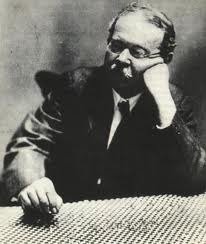
Charles Fort
I've been longing to write a headline that has nothing to do with the story below it. And this was sort of it.
Here's a fun little piece about some eggs, and orange ones at that, which appeared suddenly on the shores of a lagoon and river near the tiny Alaskan village of Kivalina.
The eggs are of unknown origin, though there is suspicion they might be from a crustacean. Whatever these are, they aren't well-known to the villagers there, who have never seen anything like it. And to ramp up the fun factor, while some stories skip mentioning it, some villagers report finding the orange mess in their rainwater collection buckets directly after a Wednesday evening rain.
Those of you familiar with Charles Fort, who collected accounts of anomalous falls of fish and frogs, among other events, will no doubt be anxious to follow this story and see how it develops. Did the strange orange goo wash inland, or did it fall in the rain?
August 4, 2011
The Week That Is

Dylan Ratigan
I'm writing my first feature since returning to Philadelphia Magazine on a full-time basis and continuing to promote Fringe-ology. So I'm a bit busy. Yesterday was a big day. I made an appearance on the Dylan Ratigan show.
Ratigan is MSNBC's outspoken moderate, and no, that's not an oxymoron when it comes to him. He is a Seinfeld-styled loud talker with what I think is a really refreshing way of approaching politics and government as problem-solving exercises. Of course, he's sort of alone in this because most commentators and of course most politicians themselves look at public life as the means to advance their party's ideology.
Not surprisingly, then, he really seemed to get the premise of the book and in five minutes we covered a lot of ground—from the paranormal to politics. You can see the whole interview here.
July 28, 2011
Lisa, Meet Alex
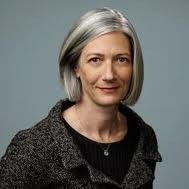
Lisa Miller, religion editor at Newsweek
Alex Tsakiris has been a friend and a big supporter for Fringe-ology. He is passionate in terms of pushing his guests for some kind of conclusion and I certainly was on the other end of his exasperation when he interviewed me about my book. In the current episode of Skeptiko, he presses Lisa Miller, the religion editor at Newsweek, to profess her beliefs.
I get where he is coming from—I really do. He expresses it articulately in this interview: People live their lives by looking at the data we've got and building a belief system from there. That's true. It's also true that in some ways that means of operating can be simply irresponsible. Because once we adopt a position on an issue, if we begin to identify with that it can be hard to rationally consider evidence to the contrary. Further, when he is dealing with professional journalists he's speaking to people who have taken it as part of their professional responsibility to, well, keep our powder dry.
Sure, I, we, and presumably Lisa Miller have our beliefs and live by them. But when we are writing or speaking for public consumption, it seems to me to be part of my responsibility to honor it when the subject at hand permits no easy answer. This isn't hedging my bets or playing it safe, from my point of view. It's acknowledging the reality of the situation. Yeah, I could take a position. But sometimes the debate is close enough or there is still so much we need to learn that the most responsible and mature answer seems to me to be: "I don't know."
Alex had a problem with me when I said it; and now he had a problem with Lisa Miller when she said it.
My own position here is what I consider an operational point of view. I think we need to go ahead and construct beliefs and live according to them. I also believe we need to be able to remember that beliefs are just that—opinions. Not knowledge. One way of acknowledging that, in public discourse, is by emphasizing that three word phrase Alex doesn't like to hear: "I don't know."
So please go check out the whole interview but here's a quick printed excerpt of a particularly telling exchange.
Alex Tsakiris: Do you believe that the best evidence we have suggests our consciousness survives our death?
Lisa Miller: I don't believe that's the best evidence we have. We're back to where we started.
Alex Tsakiris: So you don't believe consciousness survives death.
Lisa Miller: I'm saying that it's possible but I don't know for sure.
Alex Tsakiris: [Laughs] Well, I don't know for sure either. And no one…
Lisa Miller: Well, that's where we all are. That's where we all are on this stuff. We don't know. We don't know whether consciousness survives death. We don't know what Heaven looks like. We don't know whether our grandparents are there. What we have is a hope.
Alex Tsakiris: That's not where most of us are living our lives. Most of us are living our life from making some kind of conclusion from the data we have. So why is it unfair to ask you whether or not…
Lisa Miller: I didn't say it was unfair and I answered your question. I said I think that there's a possibility but I don't know. I think that it's a great hope of many people.
Alex Tsakiris: Why so noncommittal? I don't understand that.
It goes on from here, but please do check out the whole thing. It's good stuff.
July 27, 2011
Sadness Is A Blessing
Many of us have had the great misfortune of seeing The Champ at one time or another, enduring Ricky Schroeder only to find, at the end, a tragic death scene that makes the demise of Bambi's mom seem downright cheery by way of comparison—simply the prelude to a delicious venison dinner.
But it turns out the Champ has had a long, unexpected second life.
Says the Smithsonian:
"The final scene of The Champ has become a must-see in psychology laboratories around the world when scientists want to make people sad.
"The Champ has been used in experiments to see if depressed people are more likely to cry than non-depressed people (they aren't). It has helped determine whether people are more likely to spend money when they are sad (they are) and whether older people are more sensitive to grief than younger people (older people did report more sadness when they watched the scene). Dutch scientists used the scene when they studied the effect of sadness on people with binge eating disorders (sadness didn't increase eating)."
You can see the rest of the Smithsonian article here.
In the meantime, compare and contrast.
Bambi's Mom Takes A Bullet
The Champ Wins The (Sadness) Title
July 26, 2011
Story Time…
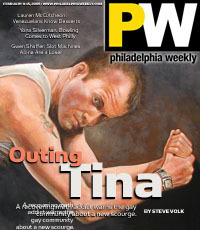 Every so often I like to include a story from my archives. This is a piece I did in 2005, when crystal meth was widely used in Philadelphia's gay community. The article gave me the opportunity to tell the story of a particularly brave man, a recovering addict named Jay Dagenhart.
Every so often I like to include a story from my archives. This is a piece I did in 2005, when crystal meth was widely used in Philadelphia's gay community. The article gave me the opportunity to tell the story of a particularly brave man, a recovering addict named Jay Dagenhart.
Here's the lede and there is a jump to the rest at the bottom.
*
When Jimmy Dagenhart saw the Christmas card from his son Jay, he knew it wouldn't offer typical holiday wishes.
The card featured a painting of his son looking rough and strung out—the same image that appears on the cover of this newspaper. "May the true spirit of Christmas live within your heart," read the inscription. A typed two-page letter addressed to uncles, aunts, cousins and friends accompanied the card.
Jimmy knew his son's troubles, so the letter's contents didn't surprise him. But he wondered how other family members would react to the third paragraph: "This is my story," it read. "I am a gay, HIV-positive recovering sex and drug addict. I've been arrested, bankrupt and have attempted suicide-once by jumping 33 feet off a ledge at a construction site in Washington, D.C., and many other times by acting out sexually in bathhouses while almost overdosing on drugs, hoping-however unconsciously or consciously-to contract the AIDS virus."
Concerned the graphic confessional would upset her, Jimmy called his ex-wife, Jay's mother. But Jay had already read her the letter over the phone.
"I may not have felt entirely comfortable with it," she says now. "But when Jay read it to me, I knew how important it was to him. I wouldn't have dreamed of asking him not to send it. Besides, it's the truth."
She couldn't predict the family's reaction. What she did know is the letter comprised another step in her son's path, a path that may soon make him a controversial figure in Philadelphia.
Jay Dagenhart moved here two years ago to kick a crystal meth addiction. Instead he wallowed for a year in city bathhouses, consuming the drug and becoming part of a subculture within the gay community that uses crystal to enhance sex. He celebrates his first year of sobriety this week. But his personal victory is only a start.
Dagenhart recently co-founded a task force to educate the gay community on the dangers of abusing crystal meth, a pure form of methamphetamine linked to high-risk sexual behaviors that further the spread of HIV.
Dagenhart knows the connection
firsthand.
"Buy Crystal, Get HIV Free"
It's 8 o'clock Sunday night. Eight men gather in Jay Dagenhart's living room for a meeting of the Philadelphia Crystal Meth Task Force.
It's October, and Dagenhart, a thin man with close-cropped hair and the small, angular features of a carved idol, passes out the agenda. No single person controls the task force's activities, but the 36-year-old Dagenhart is the group's most vocal member.
His struggle with the drug lasted more than five years and almost killed him. Dagenhart preferred to snort crystal, which can also be smoked or injected. Crystal provides an unparalleled adrenaline rush, turns insecurity into confidence and fuels sexual appetite and desire. Because the drug reduces inhibitions and increases the user's tolerance for pain, it's been tied in the gay community to prolonged episodes of unprotected anal sex or "barebacking" with multiple partners. Binge behavior.
Many of the recovering addicts on the task force say meth can twist sexual arousal into a kind of psychosis. "If you're on crystal," says one, "you can look at a table lamp and want to have sex with it."
Use of crystal in the gay community first drew national notice in summer 2003 when singer Rufus Wainwright admitted his addiction in The New York Times. But so far the crystal meth problem has received shockingly little notice locally.
Tonight Dagenhart displays ideas for posters, information cards and pamphlets he plans to disseminate. He wants to out crystal in part by adapting some of the messages used by activists in New York, including a poster that features a disco ball, a set of bare, ripped abs and a simple slogan: "Buy crystal, get HIV free."
When he shows the image and says he'd like to put up similar posters in Philly, the task force members nod in agreement.
"We should definitely pass stuff out at the Blue Ball," says one man. "We'll tell them, "After you finish partying this weekend, sober up!'"
You can find the rest here.
July 25, 2011
Carl Sagan and True Fringe-ology

Sagan in Leather
(This first appeared on the Daily Grail)
I wrote Fringe-ology with the aim of being equally skeptical of both paranormal claims and skeptical explanations for them. In other words, I think it is incumbent upon believers in the paranormal to present evidence for the phenomena they describe. But I think there comes a point in the debate where the burden of proof shifts. In practice this means anyone touting the Near Death Experience as evidence of an afterlife needs to bring something to the party. A "hit" in the Aware study, for instance, would be fabulous. That would mean one of the patients in Dr. Sam Parnia's vast pool of candidates would have to be able to name the random, controlled target that had been present when they were resuscitated and "out of body." Failing that, I do find Janice Miner Holden's research paper, "Veridical Perception in Near-Death Experiences," which documents the accuracy of reported out of body perceptions, compelling enough that all but the most die-hard skeptics should be convinced to do more than simply keep an open mind. They should, in fact, be convinced that it is time for them to do a better job of explaining the NDE than they have to date.
After all, at this stage, no one disputes that the Near Death Experience is a real phenomenon. The data pile for the NDE is robust enough that we can even make testable predictions based off the accumulated literature: Conservatively, five-percent or more of resuscitated patients will remember an NDE. And in each case, the NDE will contain similar content. A majority of experiencers will report feelings of peace and joy, an out of body experience, a perception of white light and reports of visiting another world. Further, of those people, the vast majority will take the experience to be objectively real. They will also change for the better as a result. The prospect of death, for instance, will hold considerably less sting.
In light of this, it seems plain to me that the NDE is well founded enough that it deserves a similarly well-founded explanation. This means any claimed explanation for it should face some scientific scrutiny. Problem is, it is precisely when the current skeptical model(s) for NDEs are subjected to questioning that they most readily fall apart.
I write a far longer argument about this in Fringe-ology. But in short, brain-based explanations require skeptics to develop a working model explaining how the different circumstances NDErs find themselves in at the time of their experience produce predictable changes in the content and character of what they report. People lacking oxygen should report something different than people who had plenty of oxygen and people under anesthesia should describe something different than people under the influence of no narcotics at all. The current lack of such a model for how Near Death Experiences are produced doesn't mean no such explanation or combination of explanations will emerge. But because skeptics have thus far failed to make a convincing case the NDE continues to represent a real mystery.
The problem is, we human beings don't seem to like mystery very much. So where mystery exists we often force the data at hand toward some conclusion. Because the NDE and the afterlife are so tied up in claims about religion and heaven and hell this tendency is further exacerbated by all the emotion involved. The NDE is unwanted by a lot of fundamentalist believers in religion, while others of a mystical bent are likely to embrace the NDE as slam dunk evidence of an afterlife. Further, to materialists who believe that in the end, there's nothing—that the brain, as Stephen Hawking recently put it, is a kind of computer and there's no afterlife for computers—the NDE is an affront to their worldview.
We all know what happens next: People tend to look at the data that confirms their point of view, but not the data that doesn't. And in this sense, the NDE becomes a kind of wishing pool: We stare into it and resolve its mystery by perceiving in it a reflection of the world we most expect or wish to see.
This line of argument is usually directed solely at believers. But in researching and writing Fringe-ology I found numerous examples of skeptics engaged in prolonged and public bouts of self-deceit.
The late great Carl Sagan, for instance, proposed an explanation for Near Death Experiences that never had a chance. Just a few years after the phrase Near Death Experience was coined by Raymond Moody, Sagan proposed that the source of tunnel reports in NDE stories was a replay of the birth experience. At the time of our death, he wrote, a repressed memory of the birth experience may surface. The sensation of passing through a tunnel and floating into another world and a mystical white light is a mirror of the experience of passing through the birth canal and emerging into a bright delivery room and the waiting hands of doctors and nurses.
From the beginning, this idea (to be clear, Sagan picked it up from another researcher—and ran with it) worked solely in a poetic sense. Our medical understanding at the time of Sagan's writing suggested an infant's visual system and memory aren't capable of registering the birth experience in the manner necessary for this explanation to be viable. And of course, the experiences don't really match up.
Is being smashed and struggling inside the birth canal anything like the peaceful, floating tunnel experience people describe in their NDEs? In fact, said baby is usually delivered with the crown of its head emerging first while its eyes remain closed and mashed against the vaginal wall.
In short, Sagan's favored theory never had anything to support it beyond his famous name. Others before me have soundly refuted it. (Most damningly, if Sagan's idea was right we'd expect people born by caesarean to report far fewer, if any, tunnel experiences. But people removed from the womb surgically are as likely to report tunnels as those born by vaginal delivery.) We're well past the point, though, where simply knocking Sagan's argument down is enough. I think we need to ask ourselves a further question:
Namely, why did Sagan ever propose such an obvious nonstarter of an idea?
My proposed answer is at once simple and surely incendiary for those who revere Sagan as a scientist, thinker and skeptic.
You ready?
He liked it.
In fact, Sagan liked the idea so much he wrote an entire essay, "The amniotic universe," describing how "birth trauma" and repressed memories thereof might influence us in various ways throughout our lives. More to the point, as a committed skeptic and non-theist he was so predisposed to dismiss the prospect of life after death that he was willing, even eager, to subject the NDE to the rigorous critical thinking skeptics like to proclaim. Problem is, once he had an "explanation" he liked he clearly shut his own critical faculties off.
This is how the human machine often works, leading us to commit to the answers that best fit our worldview. And this state of affairs makes true Fringe-ology—determining what we really know about the subjects we push to the fringe—tremendously difficult at best. Of course, being aware that we have a problem here is half the battle. And the Sagan example strikes me as foundational in understanding that in discussions of the paranormal, we—believers and unbelievers alike—are up against ourselves, our common humanity, our inclination to support our pre-existing beliefs.
What we might do about this is a subject for a later time…
July 21, 2011
Meeting of the Minds
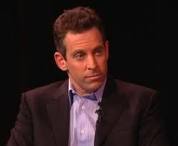
Sam Harris
Those who've read Fringe-ology know I quote both David Eagleman, the neuroscientist who advances the notion of possibilianism, and Sam Harris, the new atheist neuroscientist who not only advances atheism (sort of) but advocates that we all take seriously some form of broadly defined spirituality.
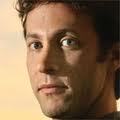
David Eagleman
In short, Eagleman thinks we should enjoy considering different possible explanations of what the world holds or what the ultimate reality might be, without committing to what he calls "any particular story." This last bit presumably applies to everything from the Bible to string theory (though of course he'd likely be a bit more admiring of string theory because it has some scientific evidence to support it).
Harris, on the other hand, is all for non-belief in God, though he criticizes use of the word atheist because we don't have a particular word for people who don't believe in other things—like, say, elves. What I really admire about Harris is that he puts his considerable reputation on the line to speak up for practices long associated with mysticism, from meditation and contemplative prayer to the use of certain drugs. He is also willing to consider some incredibly far out and colorful possibilities.
Check out this quote from his notes to the essay linked above:
"Many users of DMT report being thrust under its influence into an adjacent reality where they are met by alien beings who appear intent upon sharing information and demonstrating the use of inscrutable technologies. The convergence of hundreds of such reports, many from first-time users of the drug who have not been told what to expect, is certainly interesting. It is also worth noting these accounts are almost entirely free of religious imagery. One appears far more likely to meet extraterrestrials or elves on DMT than traditional saints or angels. As I have not tried DMT, and have not had an experience of the sort that its users describe, I don't know what to make of any of this. "
Please, before anyone feels the need to defend Harris against his own words, allow me to note that in the main body of the essay he says we should be very cautious about drawing any conclusions about the nature of reality from our subjective experiences, no matter how profound they may seem. I, however, see the spark of the possibilian in Harris and believe that's to be encouraged. So imagine my delight when I saw this recent post in which Harris "calls out" David Eagleman and also says he wants to meet him (in the nicest possible way, or close to that, anyway).
For me Fringe-ology was a way to bring together some of the most interesting ideas and people available to us within the covers of one book. I greatly look forward to seeing the results of any conversation held between Harris and Eagleman, neither of whom can be ignored.
July 20, 2011
Toward a New Theory of Consciousness
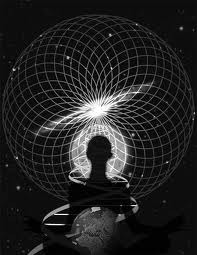 I received a highly gratifying note from Donald Padelford yesterday. He liked Fringe-ology, and as it turns out I like where he is headed with his paper, "Consciousness in Evolution: Sketch for a New Model—A Speculation."
I received a highly gratifying note from Donald Padelford yesterday. He liked Fringe-ology, and as it turns out I like where he is headed with his paper, "Consciousness in Evolution: Sketch for a New Model—A Speculation."
He sent his email address so I plan to contact him and maybe we can do a Q&A online. But here is a quick taste of his paper:
"Starting with Galileo, the thrust of science has been to construct a model, a predictive model, of a non-theistic universe, which is to say one devoid of the supernatural and of 'magical thinking.' How do things work? And no need for any frig'n ghosts (or Ghost) in the machine either. Which brings us back to the assumption that matter/energy creates consciousness. As a starting point, I want to question that assumption. In particular, I want to explicate a dual approach in which matter/energy affects consciousness, and consciousness affects matter/energy (and without trying to decide which is the ultimate 'top dog'—a largely futile task) in somewhat the same sense that matter can be converted to energy and vice versa. I think that there is plenty of evidence that this dual view better fits the facts. I would even go so far as to say that the way orthodox science has dealt with some inconvenient data is to simply ignore (or suppress) it. Those familiar with the philosopher of science, Thomas Kuhn, will recognize this as a well-worn pattern: if the data do not fit the reigning paradigm, dump data in the river. Those with longer historical memories will recognize that this was also exactly how the (Catholic) Church initially dealt with the early empiricists, albeit the Church admittedly had tools of persuasion that are thankfully unavailable to the reductionist orthodoxy of today."
Padelford's idea is that consciousness is not only "real"—many modern philosophers consider it an illusion—but that it has a hand in the evolutionary process. If Padelford got a wide reading, he would likely trigger a lot of controversy. He aims numerous verbal darts at some particularly prominent scientists and range of orthodox views on matter and consciousness and the relationship between them.
Trust me, this isn't giving away too much of his 35-page paper, which can be found here. So check out a couple of quick examples of his willingness to mix it up.
"At a conference on the conflict between (orthodox) science and religion (Beyond Belief, 2006, viewable on the web) the assembled chuckled at the story of a petroleum geologist who in his professional capacity obviously understood that the precursor materials for oil deposits were laid down hundreds of millions of years ago, but who in his private life believed that life was put on earth 6,000 years ago. These same assembled did not, however, seem to find any contradiction (or humor) between their idea that, as reductionists, they purportedly have no free will, and their idea that they 'should' spread scientific thinking. 'Should'? Either your garage door opener works or it doesn't. You don't tell it what it 'should' do. Should implies choice, and reductionists (sophistic arguments of certain philosophers to the contrary notwithstanding) don't believe that choice, and free will, exist. Like the geologist, they believe in contradictory propositions, each of which is 'common sense,' at least in their world."
And:
"The emergent view is that of, for instance, the philosopher (I would even call him a practitioner of natural philosophy) Daniel Dennett in his book, Darwin's Dangerous Idea. Make a machine complex enough, and somehow it acquires consciousness and autonomy: 'you can transcend your genes … to build an almost entirely independent … locus of meaning on the base your genes have provided' (Dennett, 1995, p. 426). In his view, determinism and autonomy are consistent, which I would call a close cousin to the concept that freedom and slavery are the same thing."
July 19, 2011
Sleeping Beauty
 This is one of the strangest stories I've seen in a while, and considering that I've been writing about ghosts and such of late, that's saying something.
This is one of the strangest stories I've seen in a while, and considering that I've been writing about ghosts and such of late, that's saying something.
I'd never heard of Sleeping Beauty Syndrome, outside of fairy tales, anyway. But it turns out there is one. And a 17 year old British girl has it. According to her parents she sometimes sleeps for as long as two weeks, with breaks coming only when her parents wake her long enough to get her to the bathroom and get her some food.
Despite demonstrating a bottomless appetite, scarfing down biscuits till her parents make her stop, she loses as many as 10 pounds when one of these episodes strikes.
The illness has disrupted her life as much as you might imagine. She had to give up her beloved dance classes and school has been a lot more challenging ever since she started missing great big chunks of it at a time.
Her bouts of prolonged sleeping are preceded by cold and flu symptoms and a level of irritability her parents find particularly disturbing, describing her as "scary" and "like a different child."
The cause is an "incurable autoimmune disorder that some researchers say disrupts the hypothalamus, the part of the brain that regulates appetite, sleep and libido."
See the full story, from ABC, here.
July 18, 2011
News-gate Threatens to Consume Us All In a Fiery Ball of Corruption and Deceit
 The arrest, this past weekend, of Rebekah Brooks, the former editor of The News of the World, shook me up pretty good.
The arrest, this past weekend, of Rebekah Brooks, the former editor of The News of the World, shook me up pretty good.
As a reporter, I kept expecting to see a firewall of sorts erected at some point. I'm not naive enough to think journalists are above the same bad behavior as everyone else. But this sort of systematic chicanery goes beyond any previous newspaper scandal of which I'm aware. In short, I expect the occasional writer to go all Stephen Glass or Jayson Blair and just start making stuff up. Sad as that might be, those guys were rogue elements, victimizing their own editors and colleagues as well as the reading public. The News of the World scandal is the exact opposite, involving a conspiracy among professional journalists to act as spies and thieves. I mean, I can imagine the CIA hacking into—and deleting—the voice messages of a murdered schoolgirl, and also attempting to hack the phones of 9/11 victims. But a newspaper?
That is some hardcore anti-social behavior right there.
I look forward to seeing this unfold. But it doesn't take a fortune teller to surmise that working for Rupert Murdoch might be harmful to a person's ethics. Or is being ethically challenged an aid to being hired by him? We'll have to wait and see. But the future looks something less than bright for Rupert. If you see him in shades, in fact, it's probably so we can't see him crying.
David Carr writes in the Times:
"As Mark Lewis, the lawyer for the family of the murdered girl, Milly Dowler, said after Ms. Brooks resigned, 'This is not just about one individual but about the culture of an organization.'
"Well put. That organization has used strategic acumen to assemble a vast and lucrative string of media properties, but there is also a long history of rounded-off corners. It has skated on regulatory issues, treated an editorial oversight committee as if it were a potted plant (at The Wall Street Journal), and made common cause with restrictive governments (China) and suspect businesses — all in the relentless pursuit of More. In the process, Mr. Murdoch has always been frank in his impatience with the rules of others."
Brooks was considered Murdoch's protege. Now she's being held on charges of illegally intercepting communications and organizing improper payments to police officers. If the charges are true, she didn't just get her hands dirty. She climbed all the way into the poison pool, till the toxic waters bubbled right up over her head. The worst scandal in the history of the newspaper business, bar none. And that doesn't even begin to describe how far this might ultimately reach.
Steve Volk's Blog
- Steve Volk's profile
- 18 followers



